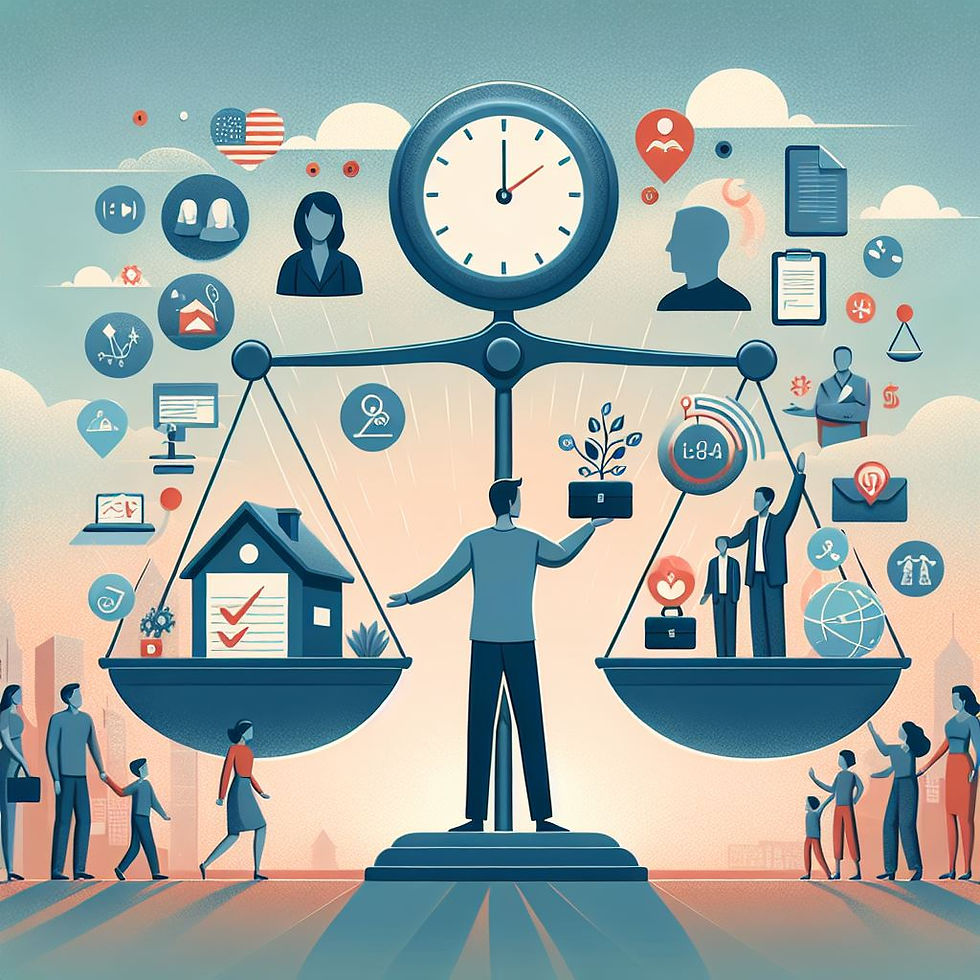PL³ Series: Practicing Authenticity
- Nick (AI assisted)

- Dec 8, 2024
- 3 min read
Living True Across Private, Professional, and Public Lives
Welcome back to the PL-Cubed series! Last time, we discussed time management and how allocating priorities across roles can bring balance. Now we’re diving into something just as crucial: authenticity.
Living authentically means staying true to your values and beliefs. But when your actions in one role don’t align with your core self, it can create identity dissonance—a feeling of being disconnected from who you are. This dissonance can negatively affect mental health, causing stress, self-doubt, or even burnout. On the flip side, practicing authenticity can boost confidence, deepen relationships, and increase satisfaction across all areas of life.
How do we live authentically in each role, and how do we bridge the gaps between them?

Authenticity Across Roles
1. Authenticity in Private Life
Your private life is where authenticity begins. It’s where you connect with your closest relationships and reflect on who you truly are.
Practice Tip: Take time to reflect on your core values and how they influence your personal decisions. Journaling or intentional conversations with loved ones can help you align your private life with your authentic self.
Potential Impact: This fosters stronger relationships and emotional clarity. Disregarding authenticity can lead to strained relationships or feelings of isolation.
2. Authenticity in Professional Life
Authenticity doesn’t mean oversharing or abandoning professionalism. It’s about aligning your work with your principles.
Practice Tip: Advocate projects that align with your ideals and communicate boundaries.
Potential Impact: When you bring authenticity to work, you build trust and collaboration. However, the fear of judgment may sometimes hold you back, making it tempting to conform to expectations at the expense of your well-being.
3. Authenticity in Public Life
Your public persona is often the hardest to align with your true self.
Practice Tip: Engage in public activities that genuinely reflect your interests. Focus on causes that matter to you.
Potential Impact: Authentic public life fosters meaningful connections, but losing this balance can create a sense of not being genuine.
4. Bridging the Gaps Between Roles
The real challenge lies in aligning your private, professional, and public selves. Authenticity doesn’t mean being identical across roles; it means staying true to your core values in every role.
Example: A professional who values environmental sustainability may practice authenticity by leading eco-friendly initiatives at work, volunteering for conservation projects in public life, and teaching their family to recycle at home. While the expression of their value differs in each role, the underlying principle remains consistent.
5. Using Goal-Stacking and Time Management to Support Authentic Living
Goal-stacking and time management can make living authentically easier and more sustainable.
Goal-Stacking: Choose objectives that align with your values and benefit multiple roles. For instance, if fitness and family time are priorities, go for a hike or bike ride with loved ones. This allows you to integrate authenticity into both your private and public lives.
Time Management: Block time for activities that reflect your values and serve as bridges between roles. For example, set aside time each week to pursue a project that blends your professional skills with community impact.
Example: A department I work in volunteers at a food bank. This aligns with personal values (private life), helps build their community connections (public life), and enhances their teamwork and organizational skills (professional life). This is a prime example of stacking goals to live authentically.
Conclusion
Practicing authenticity across private, professional, and public lives isn’t always easy, but it’s worth the effort. When you bridge these roles with consistency and care, you reduce identity dissonance and protect your mental and emotional well-being. At the same time, it’s important to recognize and respect the authentic selves of others, even if they don’t align with your own values or choices. Authenticity isn’t about imposing your beliefs on others. Authenticity is about living true to yourself while allowing others to do the same. This mutual respect fosters deeper connections and a more harmonious balance in your relationships.
Take a moment to reflect: Which role—private, professional, or public—feels hardest to align with your values? What’s one small step you could take to live more authentically in that area? For example, public life is challenging for me, and I feel disconnected. I attend local events and support causes that genuinely excites me, … and I write blogs about wellbeing.
Next time, we’ll dive into “Establishing Boundaries to Prevent Burnout” and how setting limits can reinforce authenticity and protect your well-being. Stay tuned as we continue building on these foundations, showing that a balanced, authentic life is aBLe 4U2!




Comments